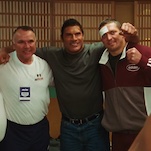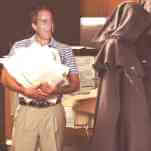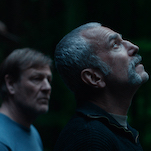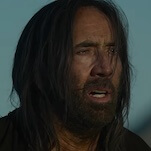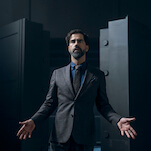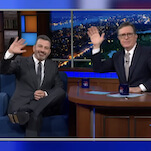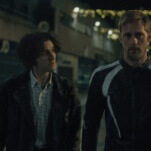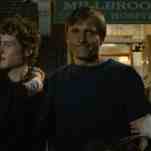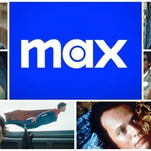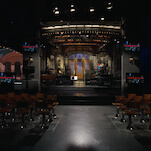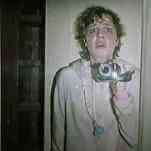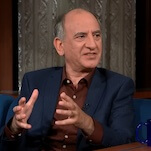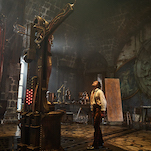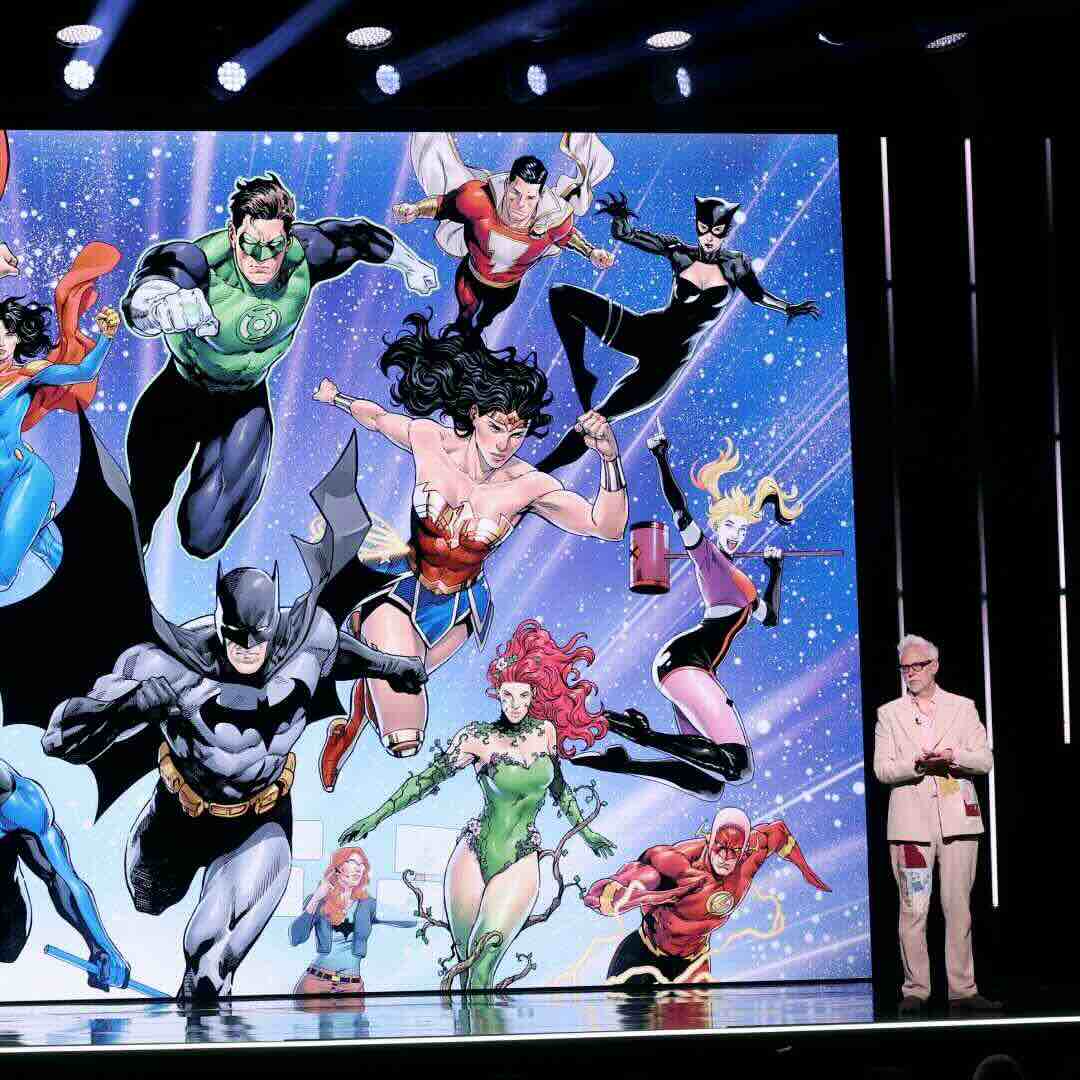Bland mimicry stops up The Smashing Machine
Benny Safdie's first solo film turns a riveting documentary into a narcotized biopic.
Photo: A24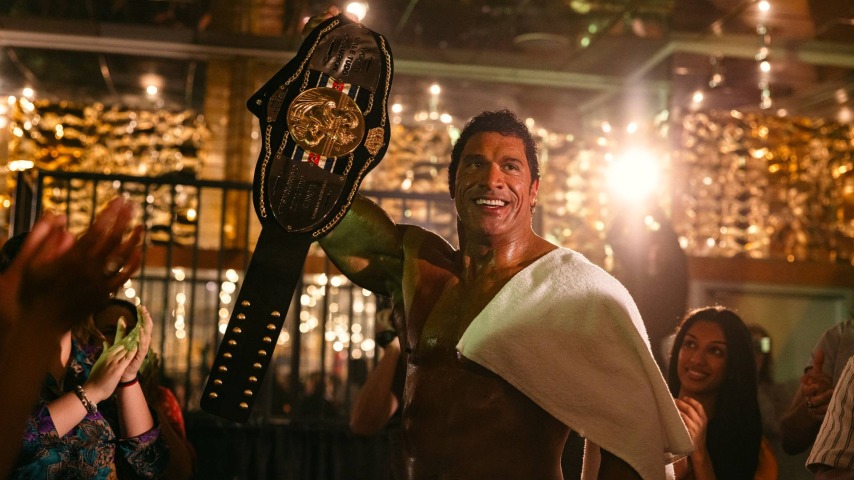
Turning a documentary into a fiction film allows for deeper psychological probing into its subjects, for scenes that only previously played out in the audience’s off-screen imagination to be given a version of flesh-and-blood reality, and for an artist to apply their own interpretation to a particular sequence of real events. But if a biopic simply mimics its non-fiction inspiration beat for beat, mirroring its structure, aesthetic, dialogue, and even individual frames, then the exercise merely trudges forward with the narcotized lifelessness of Disney’s “live-action” remakes. This is the fate of The Smashing Machine, which deadens its retold story of early mixed martial arts fighter Mark Kerr with stilted reenactments and endless injections of numbing drama.
But here’s the thing: If you haven’t seen John Hyams’ excellent 2002 HBO documentary The Smashing Machine: The Life And Times Of Extreme Fighter Mark Kerr, then writer-director Benny Safdie’s first film without his brother Josh is intriguing on its surface. Mark Kerr (Dwayne Johnson) is a hulking inverted pyramid introduced in voiceover, his meek voice quietly explaining the thought process behind beating ass in the octagon. He’s thoughtful and calm, casually talking through how he wants to hurt people before they hurt him—or at least, worse than they hurt him. It’s an engrossing dynamic tamped down by Johnson’s stiff performance and movie-star gleam, neither of which can be fully buried under superfluous facial prosthetics that seem to shift from scene to scene. Johnson’s greatest acting assets are his traps and quads, muscles ballooning with an implied menace that Mark never otherwise embodies.
